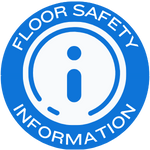Understanding Slip and Fall Accidents: Causes, Consequences, and Prevention
““Slip and fall accidents are the leading cause of workplace injuries, but they are preventable through proper safety measures and training.” ”
Slip and fall accidents can occur anywhere, at any time, and can cause serious injuries that can have long-term consequences. According to the National Safety Council, slip and fall accidents are the leading cause of non-fatal injuries among people of all ages, and they account for over 1 million emergency room visits each year. In this article, we will discuss the causes and consequences of slip and fall accidents and provide strategies for preventing them.
Causes of Slip and Fall Accidents
The most common causes of slip and fall accidents include wet or slippery floors, uneven surfaces, inadequate lighting, and obstacles in walkways. Other factors that can increase the risk of slip and fall accidents include age, physical limitations, and certain medical conditions such as arthritis or vision problems.
Slip and fall accidents can occur in a variety of settings, including workplaces, public spaces, and homes. For example, in workplaces, slip and fall accidents can be caused by spilled liquids, loose floor tiles, or poorly maintained walking surfaces. In public spaces, slip and fall accidents can be caused by weather-related hazards such as ice or snow, or wet floors in restrooms or other areas. At home, slip and fall accidents can be caused by loose rugs, cluttered walkways, or wet surfaces in bathrooms or kitchens.
Consequences of Slip and Fall Accidents
The consequences of slip and fall accidents can be severe and long-lasting. Slip and fall accidents can result in a range of injuries, from bruises and cuts to fractures, head injuries, and even death. In some cases, slip and fall accidents can also lead to long-term consequences such as chronic pain, loss of mobility, and decreased quality of life.
Older adults are particularly vulnerable to slip and fall accidents, and falls are the leading cause of injury-related deaths in this age group. According to the Centers for Disease Control and Prevention, one in four adults aged 65 and older falls each year, and falls are responsible for over 95% of hip fractures among this age group.
Prevention Strategies for Slip and Fall Accidents
Preventing slip and fall accidents requires a combination of strategies, including regular maintenance and inspections, employee training, and the use of appropriate safety equipment. Here are some best practices for preventing slip and fall accidents:
-
Keep floors clean and dry: Regularly clean and dry floors to prevent the buildup of dust, dirt, and liquids that can create slip hazards.
-
Use appropriate signage: Use warning signs to indicate wet or slippery floors, and make sure they are visible and in good condition.
-
Proper footwear: Encourage employees or visitors to wear appropriate footwear with slip-resistant soles.
-
Adequate lighting: Ensure that walkways and stairwells are adequately lit to prevent tripping hazards.
-
Regular inspections: Regularly inspect floors and walking surfaces for potential hazards, and address any issues promptly.
-
Slip testing: Use slip testing to identify potential slip hazards, and implement appropriate measures to address them.
Conclusion
Slip and fall accidents can cause serious injuries that can have long-lasting consequences, but they are largely preventable. By implementing best practices for slip and fall prevention and using slip testing to identify potential slip hazards, businesses and organizations can create safer environments for employees, customers, and visitors.
The following sources were used in the research and writing of this article:
-
National Safety Council. (2021). Slips, Trips and Falls.
https://www.nsc.org/workplace/safety-topics/slips-trips-and-falls/slips-trips-and-falls-home -
Centers for Disease Control and Prevention. (2021). Older Adult Falls.
https://www.cdc.gov/steadi/pdf/steadi_clinicianfactsheet-a.pdf -
National Floor Safety Institute. (2021). Slip and Fall Quick Facts.
https://nfsi.org/nfsi-research/quick-facts/ -
Occupational Safety and Health Administration. (2021). Slip, Trip, and Fall Prevention.
https://www.osha.gov/fall-protection -
National Institute on Aging. (2021). Falls and Fractures.
https://www.nia.nih.gov/health/falls-and-fractures-older-adults-causes-and-prevention






